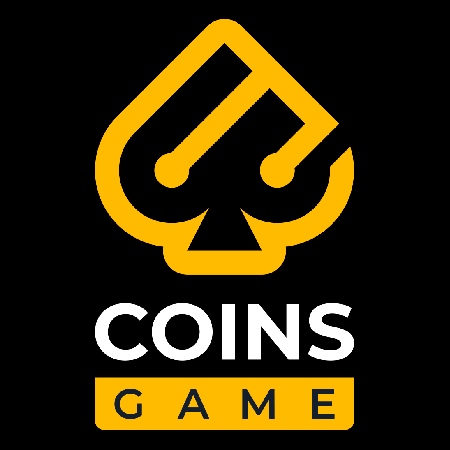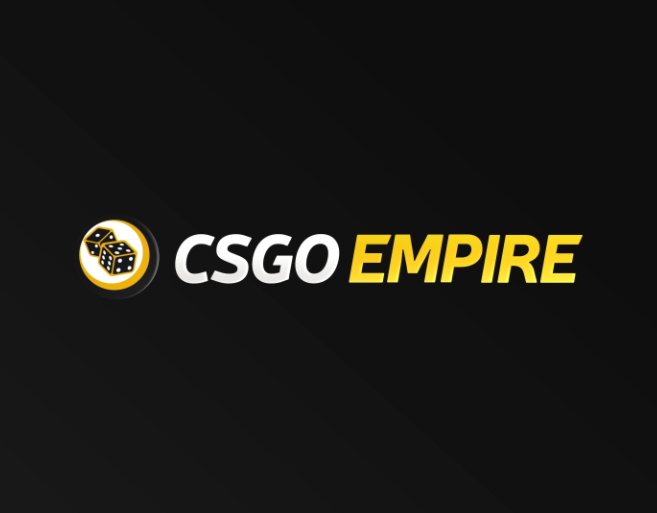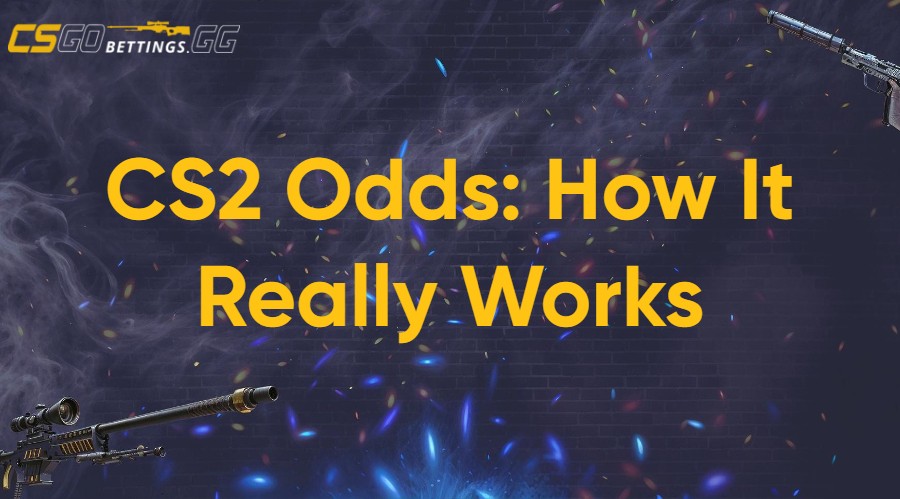
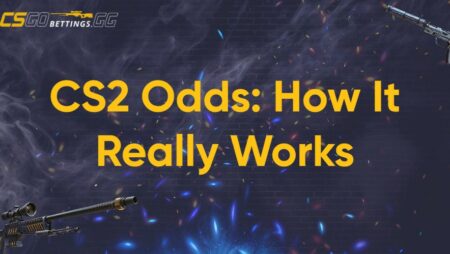
Have you ever wondered what’s really behind those CS2 betting odds? Everyone (well, nearly) knows they’re not mere random numbers. In our experience, they’re little clues packed with probability, risk, and a sprinkle of bookmaker magic. Knowing how odds are calculated can seriously level up your betting game, so we’ve spent years at CSGBettings diving deep into the numbers.
In this guide on CS2 betting odds explained, we’ll show you exactly how it all works and why it’s smarter not to just trust your gut!
Betting Odds: What Are They?

If you’re a newbie, there’s a good chance you’ve heard seasoned gamblers (whether it’s CS2 skins betting, casino, or even betting on sports) talk about betting odds.
So, you wonder, what are they? Are these numbers really that important? You’d be surprised! In our years covering (read, reviewing) CS2 gambling sites and deciphering how CS2 odds work, our simplest definition of betting odds would be that it’s a bookmaker’s tool for showing you two things.
First, how likely (or chance) an event will happen (that’s why you call it “odds”).
Second (and more importantly!), betting odds give you an idea of how much you could win (if you bet on it!). Another way to put it is to look at betting odds like a secret code. One tells you the risk involved and the reward you could score if things go your way.
Odds help balance the excitement of a match with the cold, hard math working behind the scenes, and once you get a feel for them, you’ll start spotting value like a pro. We must reiterate that odds come in a few different styles (i.e., decimal like 1.75, fractional like 17/20, and American like +300 or -200). Each format looks a little different, but they all mean the same thing. They are a glimpse into the reward you could walk away with (depending on your bet).
We’ll break these down soon. But for now, please remember that understanding formats is a big part of getting eSports odds explained properly and betting smarter!
Types of Odds Formats You Must Know
In our experience, many novice CS2 bettors stake on what their “gut” tells them. Not bright! So, you will want to know how to READ the odds before you dive into your next CS2 bet.
We’ll break down the three main odds formats in this mini CS2 odds guide. They’re all just different ways of showing you two things. One, your potential payout. Two, your chances of actually winning.
Let’s keep it simple.
Decimal Odds (i.e., 1.85 or 2.75)
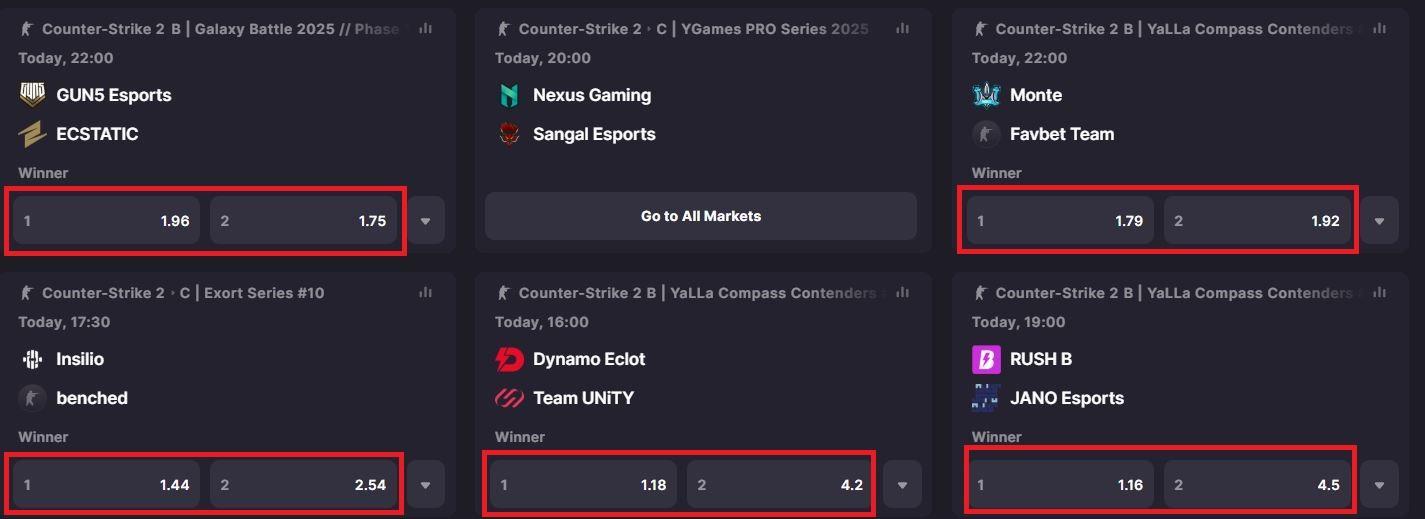
This format is super straightforward. Our simplest description? Decimal number = Payout! How do you know your winnings? Multiply your wager by the decimal odds to determine what you’ll get back.
Example: Wager $10 at 1.35 to get $13.50 (profit + your stake).
Here’s a quick math to know your “implied probability” (chance) of winning. Divide 1 by the decimal odds! In our example, that’s 1 ÷ 1.85. So, you have 54.05% chance (or odds).
Fractional Odds (i.e., 17/20 or 93/100)
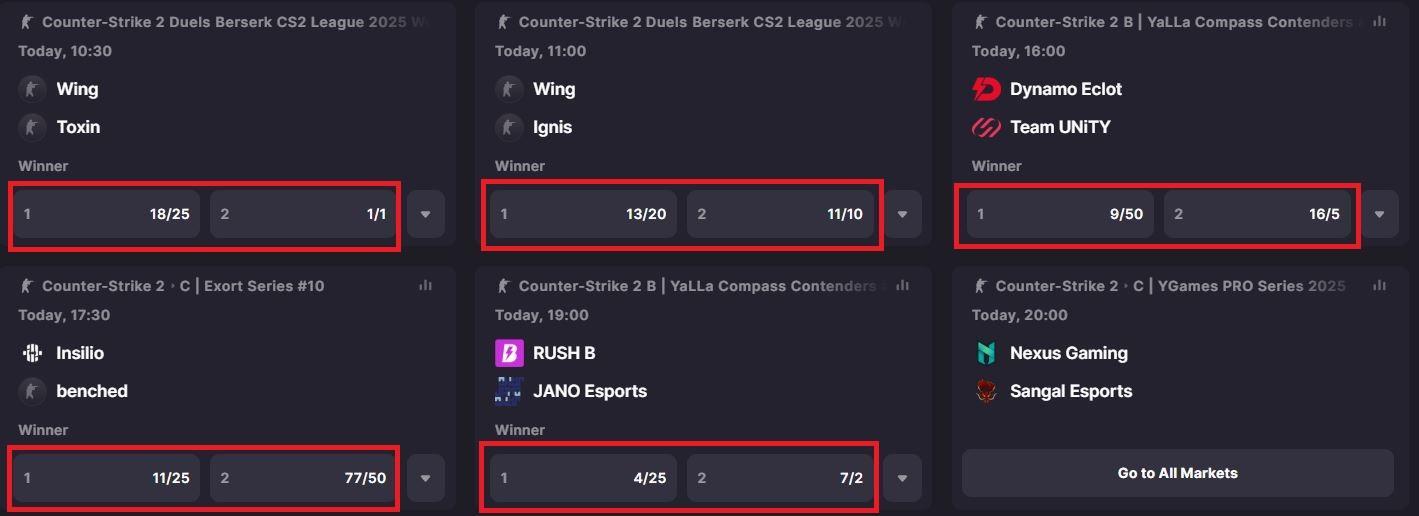
This odds format has the classic British vibes. It shows how much you win, NOT what you bet.
Example: Bet $20 at 17/20 to win $17 (plus your $20 back).
To check your chances (probability), you’ll add both values (numerator + denominator) and us it to divide the denominator. That’s D ÷ (N + D). So, in our example, that’s 20 ÷ (17 + 20) = 54.05% chance. It might be old-school, but fractional odds still kick hard!
American Odds (i.e., -120 or +200)
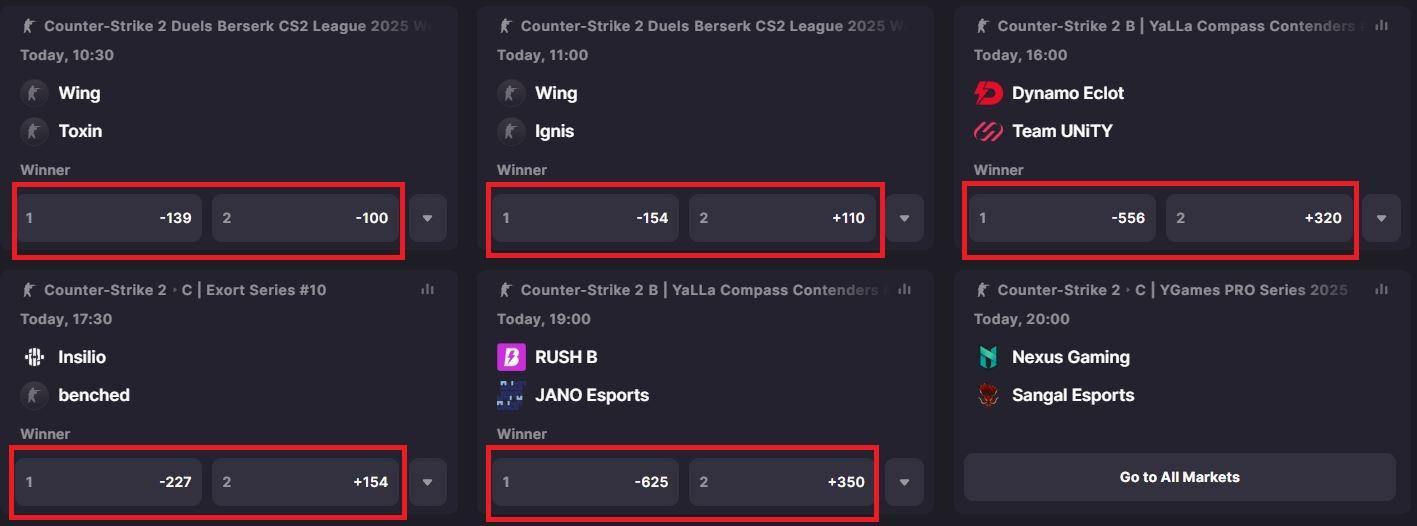
American odds use plus and minus signs to indicate favorite and underdog bets. It might throw you off, but it’s just some cool math.
- Negative odds (i.e., -120 or -300)
It’s simply how much you have to bet to score a $100 win. For -155, that’s $155 to win $100.
Your odds? That’s value ÷ (value + 100). So, 155 ÷ (155 + 100) = 60.78%
- Positive odds (i.e., +120 or +300)
Negative odds focus on your stake, while positive odds highlight the potential return (for betting $100). Hence, +175 means $175 for betting $100.
Calculating the odds is a bit different. That’s 100 ÷ (Odds + 100). So, 100 ÷ (175 + 100) = 36.36%.
Based on our experience, many novice players can start spotting juicy bets and dodging traps like a pro once they can eyeball these formats. Nail this, and you’re ready to crush CS2 probability betting. Trust us! It feels way better than rage-buying a P90.
How Are Odds Calculated in CS2 Betting
Now that we’ve discussed odds format types, ever wondered how are betting odds made for your favorite CS2 matches? We’re not talking about a bunch of guys in suits rolling dice and shouting numbers (although, admittedly, that would be hilarious). In reality, bookmakers use a ton of serious data to set those odds, balancing probability, risk, and their own built-in profit margins.
First, the number-crunching begins with cold, hard stats. Bookmakers dig deep into win rates, player performance stats, map history (some teams just “hate” Mirage, it’s a thing), current team form, and head-to-head (H2H) records.
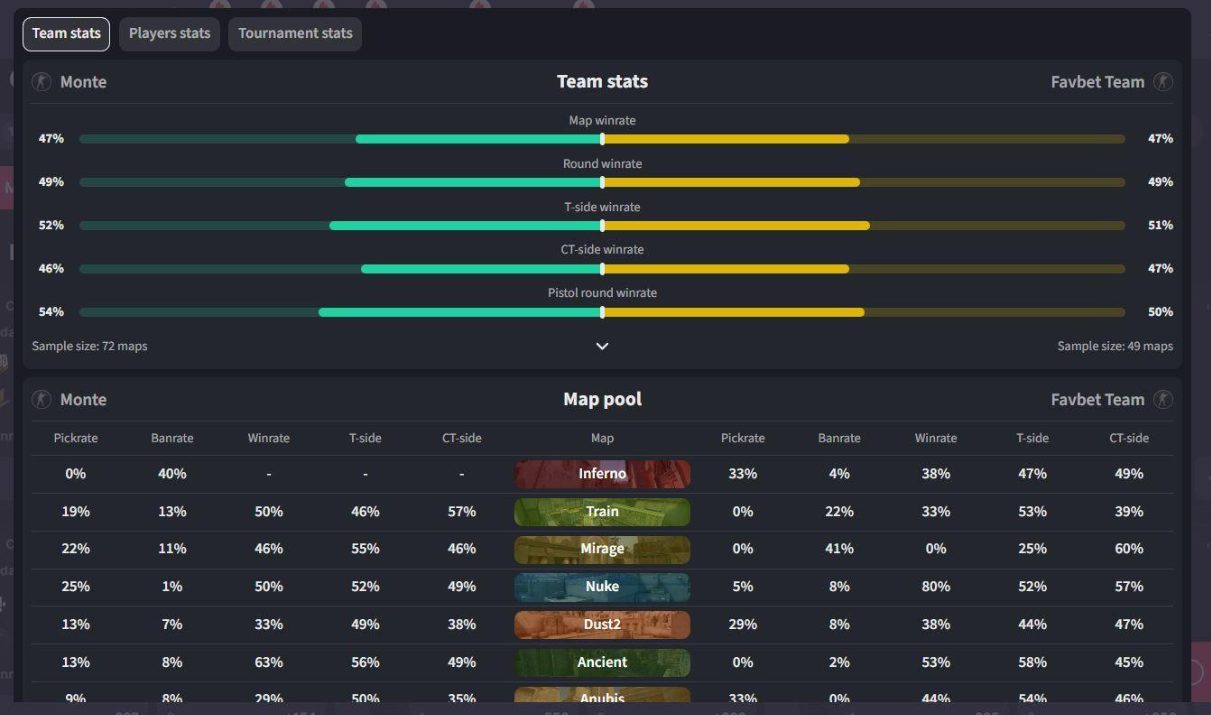
If Team A has stomped Team B the last six times they met, you can bet the odds will reflect that dominance. But the story doesn’t end there. Far from it! Bookmakers also pay very close attention to public betting trends and their own risk exposure. Bookies might tweak the odds to protect themselves from getting absolutely rinsed if a flood of people suddenly starts betting on an underdog.
Moreover, there’s always the “internal margin.” It’s a little hidden percentage bookmakers build into every odd set. They add this to ensure bookmakers stay in business no matter what crazy upsets happen on the server. What’s great about cs2 odds calculation is that it’s never set in stone. Odds shift dynamically as new information rolls in (like roster changes, unexpected delays, player bans, or a sudden Twitter meltdown from a star AWPer). One minute, you’re looking at tasty underdog odds, the next, сompletely different numbers.
At CSGOBettings, we’ve seen it all. One time, a top-tier team benched their star rifler just an hour before a match. It was chaotic! The odds shifted so fast it felt like watching a rollercoaster in real time. Another time, a map veto leaked early, revealing a terrible map pool for the favorites. Odds flipped dramatically before a single bullet was even fired!
So, next time you see those odds bouncing around, remember that it’s not magic! Odds embody objective data, and thoughtful strategy (and occasional drama). Understanding how bookmakers juggle all these factors can give you a serious edge (and make you feel like the smartest person in the room when you call an upset before it happens!).
Why Odds Vary Across Betting Sites

Here’s the thing! You cannot expect ALL bookmakers to play (or abide) by the same rules. Some build in a chunky CS2 bookmaker margin to cover their backs (and make their odds a little less tasty for bettors). Others are willing to take more risks, offering tighter margins to lure in sharp-eyed players looking for better value.
Unfortunately, odds aren’t just shaped by team stats. Regional hype can throw things off, too. For instance, a local fan-favorite might have odds that don’t really match their true chances. Market liquidity matters, too! Big events with lots of bets tend to have sharper odds. Meanwhile, smaller matches can swing wildly depending on where the money’s landing.
So, what should you do? Always shop around before you bet. A few clicks to compare odds could be the difference between a nice win and a HUGE one.
What Is Implied Probability?
In our experience, many novice gamblers want to bet smarter in CS2. Our advice? Make friends with CS2 implied probability. It’s like decoding the hidden meaning behind the odds. Implied probability is nothing more than what chance a bookmaker thinks an outcome has, based on the odds they offer.
The odds you see (like 1.50, +200, 93/100, etc.) aren’t random numbers. They’re the bookmaker’s way of showing how likely THEY believe something is to happen. Here’s an easy formula for decimal odds (for other odds formats, you can check our discussion above):
Implied Probability = 1 ÷ Decimal Odds
Hence,
- 1.50 odds = 66.67% chance of winning
- 2.00 odds = 50% chance
- 4.00 odds = 25% chance
Sharp bettors don’t just nod and accept it! They eyeball the implied probability and reflect whether they agree with the bookmaker’s “assessment.” If your own analysis gives a team better odds than the bookies do, boom! You might have found a value bet. (That’s where the real magic happens.)
How We Analyzed Odds at CSGOBettings
At CSGOBettings, we don’t guess at odds. We live and breathe them. Our approach to CS2 odds comparison is all about digging into the real numbers behind the hype.
Before big CS2 tournaments kick off, we’re already tracking odds from multiple platforms.
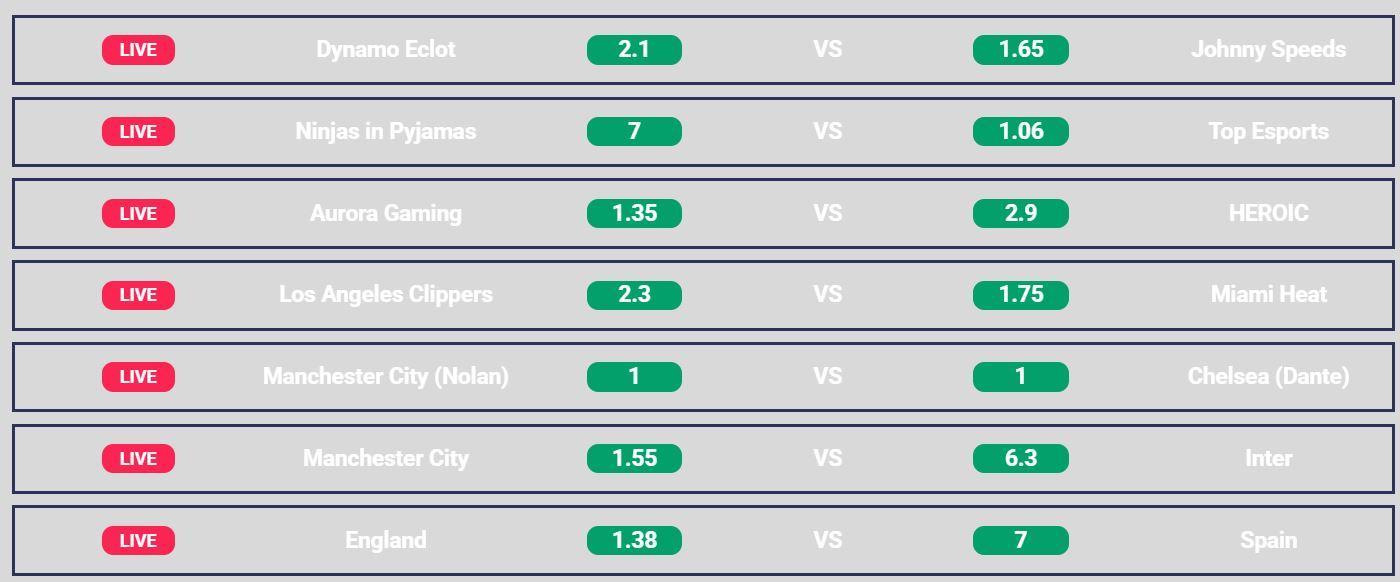
We watch how lines move the moment matchups are announced, especially when there’s a sudden shift after roster changes, map pool updates, or even a sneaky ban. (Nothing moves a betting line faster than news of a top fragger getting benched.)
When it comes to which data we trust most, it’s simple.
- Map win rates: Some teams are monsters on certain maps and lost puppies on others.
- Recent form: Yesterday’s champions can turn into today’s heartbreakers fast.
- Player replacements and role changes: Swapping one player can completely flip a team’s chemistry.
We don’t just look at the odds! We look at WHY they’re moving. This way, we find the real edges that casual bettors usually miss. If you’re serious about CS2 betting, smart odds comparison is not only helpful. It can also be your secret weapon.
Our Conclusion
Knowing how CS2 odds are calculated gives you a serious edge. Odds aren’t some unchangeable fact. They are a mix of perception, data, bookmaker margin, and a little bit of market madness. The more you understand what’s behind the numbers, the smarter your bets become. Trust us. There’s no better feeling than spotting an opportunity before the rest of the crowd catches on.
So, stick with CSGOBettings for deeper breakdowns and real-world insights. We deliver the odds insights you need to keep ahead of the curve. Betting smarter starts right here.

|
Mary S Colbert is a Chief Content Editor at csgobettings.gg, specializing in CS2 with over 8 years of experience as an e-sports analyst. Her informative articles on the game have made her a go-to resource for fans and her expertise is widely respected within the industry.
|




